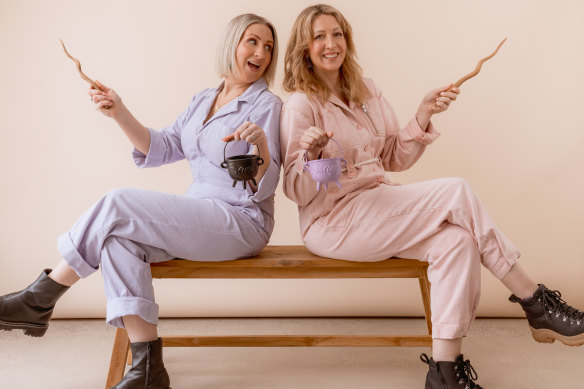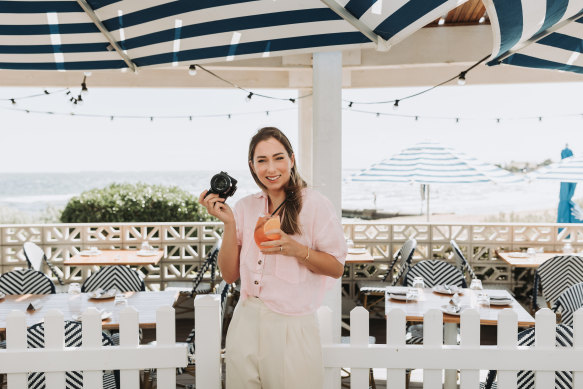This was published 6 months ago
These sisters started their magic company with a $1000 investment. It now turns over millions
By Emma Koehn
Melbourne business The Little Potion Co has conjured a close bond with its customers.
Sisters Jacinta Evans and Alicia Gordon founded the company – which sells potion-making activity kits for children – five years ago after failing to find similar products on the market for their own families.

Jacinta Evans and Alicia Gordon, founders of The Little Potion Co.
These days, they are used to having late-night conversations with the parents who have bought their products via Instagram. The business gets messages of thanks on Christmas Day from families who were gifted potion kits.
“With our customers, we very much speak to them like they’re friends,” Evans says. “We’ve always been so open on everything that we do, that people feel comfortable enough to message us and tell us personal stories.”
Building a community around a brand has become an increasingly important way to ensure the success of a business idea, with online conversations driving sales while households face significant pressure on their budgets.
Research from the Australian Retailers Association last month suggests that promoting consumer loyalty is a key priority for smaller retailers in the current conditions, with 30 per cent wanting to improve their online engagement. Meanwhile, consulting giant McKinsey & Company argues that community is a key marketing trend of the 2020s.

Social media manager and owner of The Meaningful Social Club, Natalie Lasance.Credit: Julia Forte
Businesses must think in detail about who their core communities are, how they like to be spoken to and what their unmet needs are, the firm’s research team says.
Founder of social media agency The Meaningful Social Club, Natalie Lasance, says consumers are demanding more from companies on social media. Potential customers want to see businesses “peel back the layers” of their operations.
“They want to see the real challenges you face and go behind the scenes as you build your business. Some of the best content for a small business can be around your failures and setbacks,” she says.
Business owners need to become “master storytellers” as soon as they launch online.
“Your narrative needs to be your real, authentic life and the challenges you face. Think about how you can turn everyday situations into a story or narrative with a strong hook and clear call to action,” Lasance says.
Alicia says The Little Potion Co has been intentional about bringing customers on the journey while building the brand.
“We want our customers to have the best experience. Whether that’s from our social media, our emails, our marketing, it’s all about brand values and talking to them in a way that makes them feel part of what we are creating.”
Turning a magical idea into millions
Community building is not the only approach that The Little Potion Co has used to personalise the business. The founders have also leveraged their expertise in interior design and retail to ensure their products fit the needs of their core consumers.
Because every new potion kit is a bespoke invention, the company needs extensive testing and research before bringing any product to market.
Starting small has been the key to building viable products from the initial business idea – the pair started the company with an investment of just $500 each.
“We did start small – we didn’t go out and buy hundreds of thousands of units of something. We started small so that we could test what worked, and then we put it all back into the business,” Gordon says.
The pair also made sure to engage in detailed research about existing trademarks and intellectual property around magical themes like fairies and wizards, to avoid the pitfall of infringing on someone else’s idea.
That cautious approach has paid off for the company, which has steadily grown since 2019 and recorded $2 million in sales during the last financial year.
Looking back on the company’s growth, the founders believe that moving slowly to develop their idea was a worthwhile strategy.
The company didn’t launch a website until about six months into the journey. However, the team was on Instagram early, spending time connecting with other businesses in the sensory play community and understanding the needs of the consumer.
“That meant we could see what people were interested in, and what was missing from the market as well,” Gordon says.
Next in the series: How much cash do you really need to launch a business?
This story was created in partnership with Google. The content is independent of any influence by the commercial partner.